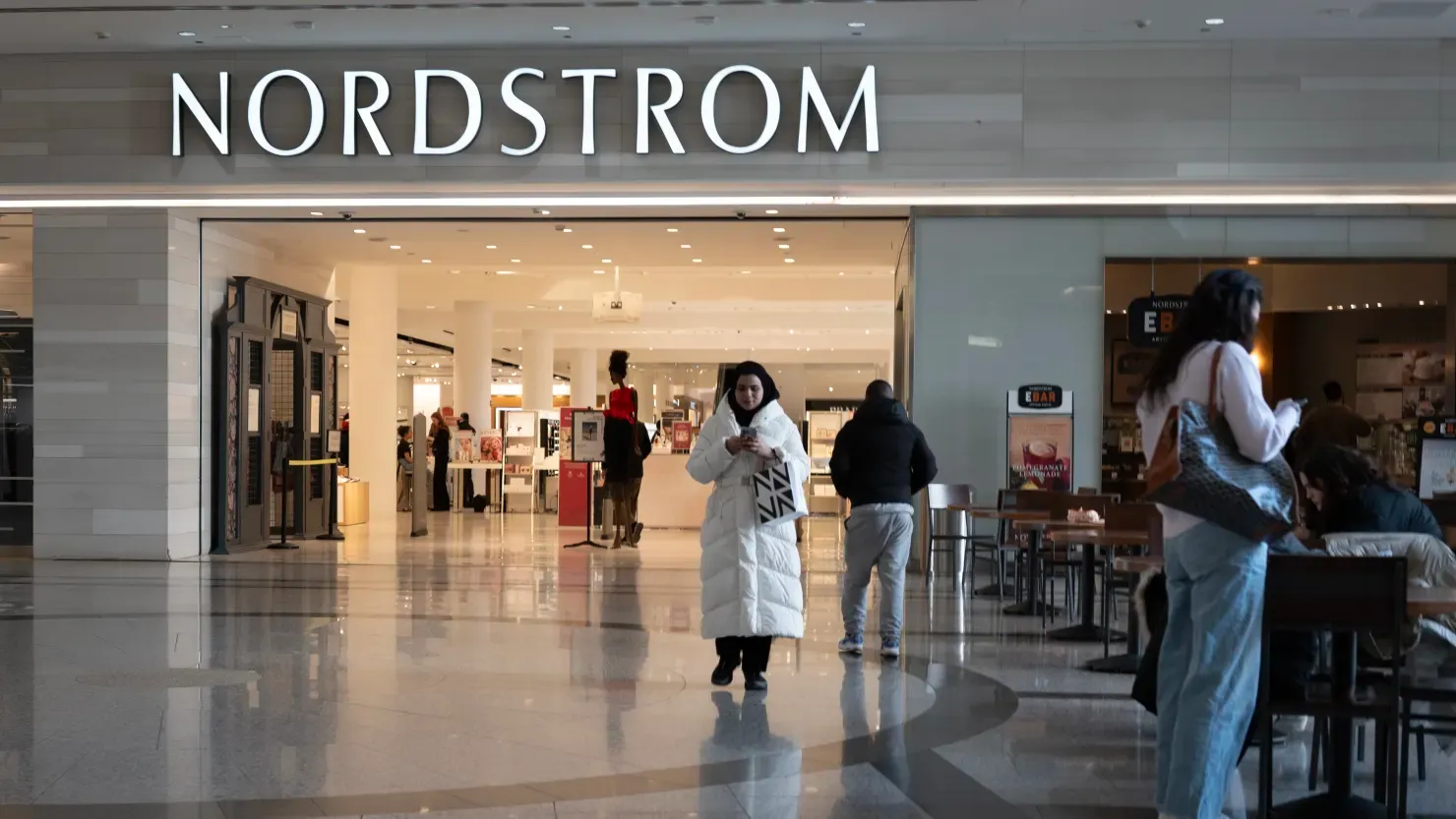Nordstrom reported a strong third quarter on Tuesday, surpassing Wall Street’s sales expectations with a 4% year-over-year revenue increase.
 |
| Scott Olson | Getty Images |
This growth was driven by customer purchases of clothing, footwear, and activewear at its flagship department stores and Nordstrom Rack, its off-price chain.
Despite the positive results, the Seattle-based retailer adopted a cautious outlook for the holiday season.
Nordstrom slightly raised its full-year revenue forecast, now expecting revenue to range from flat to a 1% increase, compared to its earlier projection of a 1% decline to 1% growth. However, it maintained its adjusted earnings guidance at $1.75 to $2.05 per share.
In a statement, CEO Erik Nordstrom emphasized the company’s success in catering to discerning shoppers. Sales of women’s apparel and activewear surged by double digits year-over-year, while categories like shoes, men’s apparel, and kids’ clothing grew by mid-to-high single digits.
Sequential growth was also noted in women’s apparel, shoes, and men’s apparel compared to the second quarter.
"Our customers have many options, and our performance indicates that our efforts are resonating,” Nordstrom stated. “As we look ahead, we remain focused on enhancing the shopping experience to maintain the positive momentum we’ve built throughout the year.”
However, Nordstrom acknowledged a noticeable sales slowdown in late October, which has been factored into its holiday season forecasts.
Key Q3 Performance Metrics:
Earnings per share: Adjusted 33 cents (comparability to analysts’ estimates unclear)
Revenue: $3.46 billion, exceeding expectations of $3.35 billion
Net income: $46 million (27 cents per share), down from $67 million (41 cents per share) in the same period last year
Comparable sales: Up 4%, outperforming analyst predictions of 0.7% growth
The quarter’s performance stood out amidst a challenging retail environment, where discretionary spending and luxury purchases have been under pressure. Competitors like Walmart, Target, and Best Buy have reported cautious consumer behavior focused on price sensitivity.
Nordstrom also faced a calendar-related challenge, as its Anniversary Sale contributed fewer days to this quarter compared to last year, impacting net sales by approximately 1%.
Nordstrom Rack has been a key growth driver for the company, contributing to both sales and store expansion. Comparable sales rose 4% at Nordstrom stores and 3.9% at Rack. This year, Nordstrom opened 23 new Rack locations, aligning with its plan to open 20 to 25 new stores annually.
Additionally, it introduced store fulfillment for online orders at over 100 Rack locations and enabled buy-online, pick-up-in-store options at the same stores.
Digital sales saw a 6.4% year-over-year rise, accounting for about one-third of total quarterly revenue.
Enhancements to the company’s website and app, including improved search functions and more affordable items under $100, supported e-commerce growth. Nordstrom also expanded its third-party marketplace, now hosting over 300 sellers.
In the backdrop of these developments, Nordstrom’s founding family is exploring a move to take the company private. A non-binding proposal was submitted in September, offering to buy the retailer for $23 per share.
This follows earlier reports in March about the family’s intentions, which have contributed to a 32% year-to-date increase in Nordstrom’s stock price, outpacing the S&P 500’s 26% gain.
With its blend of in-store innovation, digital enhancements, and cautious financial planning, Nordstrom is positioning itself to navigate the critical holiday shopping season successfully.

0 Comments